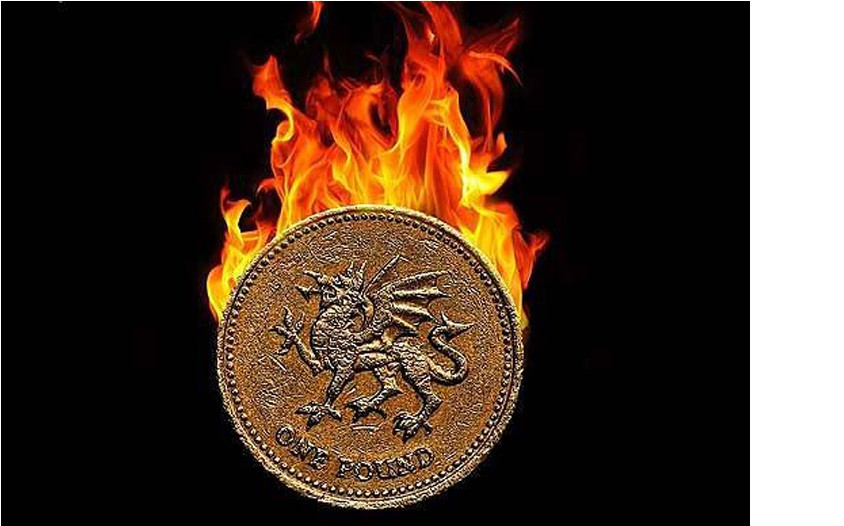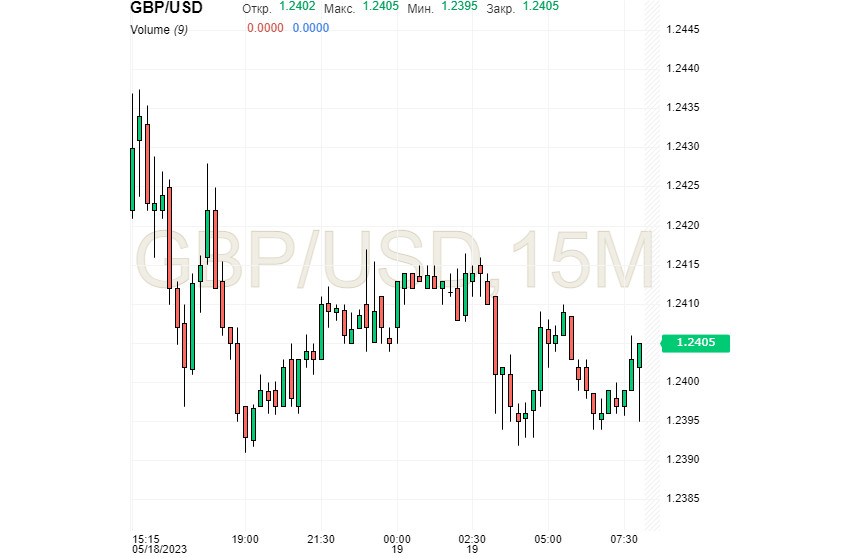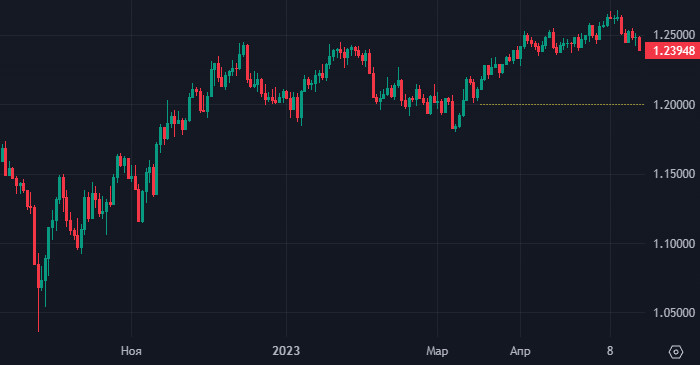
As the week draws to a close, the pound has retreated from its recent gains. Despite the downward slide, market experts maintain an optimistic outlook, anticipating a potential recovery for the pound sterling.
Analysts note that the UK economy is in a fragile state due to inflation and the regulator's attempts to bring it down. Economic advisors at ABN AMRO predict that inflation would remain at its current levels, which would lead to another interest rate hike by the Bank of England. The regulator has signalled recently that the rate hike cycle may be nearing a conclusion, with the last one expected in June.
Earlier this month, the pound sterling had a winning streak against both the euro and the US dollar, hitting a five-month and an 11-month high, respectively. The rise was largely fueled by encouraging macroeconomic data, which led to the Bank of England's decision to raise interest rates to 4.5%.
However, the pound sterling gave back some of its gains by week's end, falling off the key level of 1.2400. GBP later managed to regain some ground and resisted further downside pressure. As of Friday morning, May 19, the GBP/USD was trading at 1.2405, seeking to establish an upward trajectory.

Market experts attribute the recent pound sterling's retreat to positive labor market trends in the US and reduced fears over a potential default. The US debt ceiling crisis, once a cause for concern, is increasingly likely to be resolved in the future.
The US Bureau of Labor Statistics (BLS) released a better-than-expected initial unemployment claims report last week. Jobless claims increased by only 242,000, significantly lower than the 254,000 reported the previous week. In addition, the Philadelphia Fed's business activity index outperformed forecasts, dropping to -10.4 points, above the forecasted level of -19.8. It was boosted by an uptick in new orders despite a decrease in employment.
GBP/USD took a hit following the release of the macroeconomic data, dropping to its weekly low from 1.2440, before rebounding to 1.2400 and moving higher. The pair's decline has halted as the week ended. GBP/USD achieved a multi-month high of 1.2668 earlier in May, but now those highs seem out of reach.
FX strategists at Nomura are recommending opening a short position on GBP/USD targeting 1.2000 by mid-July, citing escalating challenges in the UK labor market and reduced global economic growth forecasts. Investors' bullish stance on GBP stance could have negative repercussions on the pound sterling's performance.

Their outlook is based on expectations regarding upcoming macroeconomic data. The April inflation report is due on May 24, and experts anticipate UK consumer price inflation to decelerate to 8.00% YoY from 10.1%. Core inflation is expected to reach 6.0% YoY from 6.2%. The decline is primarily attributed to a significant drop in energy prices, which is noted to be a bearish indicator for the pound.
Monetary policy tightening is also a key factor for GBP. Analysts at ABN AMRO speculate that the Bank of England may pause its rate hikes. However, the global currency markets are shifting their focus towards potential rate cuts, suggesting the UK central bank may need to reassess their plans. ABN AMRO predicts that the bank will adopt a cautious approach given its need to hike rates at a time when many central banks are starting to cut interest rates.
The strategists at ABN AMRO believe that the Bank of England's interest rate has hit its peak at 4.5%. However, in light of higher wages and core inflation, they predict the bank will need to reassess its current strategy. This adjustment, they say, is likely to result in a rate cut not in the last quarter of 2023 as previously predicted, but in Q2 2024.
 English
English 
 Русский
Русский Bahasa Indonesia
Bahasa Indonesia Bahasa Malay
Bahasa Malay ไทย
ไทย Español
Español Deutsch
Deutsch Български
Български Français
Français Tiếng Việt
Tiếng Việt 中文
中文 বাংলা
বাংলা हिन्दी
हिन्दी Čeština
Čeština Українська
Українська Română
Română

